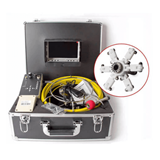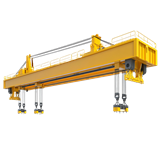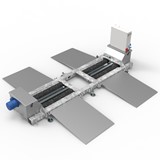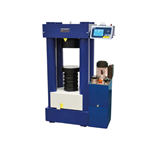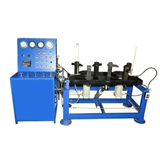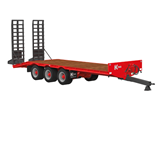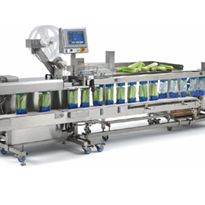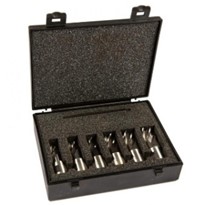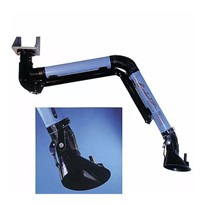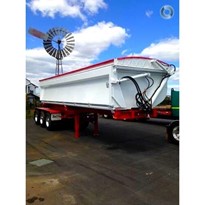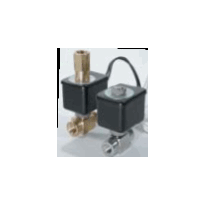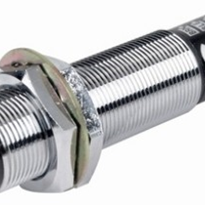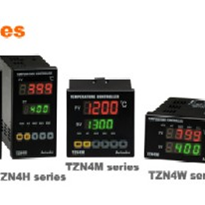What do a zebra and a scorpion have in common? The answer: over time, both have adapted to their prevailing requirements and can withstand even adverse environmental conditions. Even igus can look back on a "technical evolution" with its energy chains. For several decades, experts from the Germany-based company have been testing standard and special solutions to ensure that applications run trouble-free. Above all, the roller energy chain opened the door to demanding industries and minimises drive energy and noise emissions. And the development continues ...
For around 45 years, igus has been developing energy supply systems that reliably guide cables and hoses and protect them against damage. In the beginning, they were almost exclusively products for the mechanical engineering sector, the invention of the roller energy chain more than 20 years ago brought about the breakthrough into other branches of industry. The technical basis is the integration of rollers into the chain links to reduce the coefficient of friction on long travels, saving up to 57 per cent of the required drive energy while moving the energy chain system. Noise is also significantly reduced.
One of the first practical applications in the early nineties was found in a composting plant under extreme conditions: organic waste rots in a closed hall, producing temperatures of up to 80°C and an air humidity of almost 100%. There are various substances in the air that affect the technology, such as ammonia and organic acids plus there is a pH value of about five on all surfaces. Since the organic waste is also mixed with coarser materials such as shrubs and tree trimming, there is also a very high abrasive input, which acts mainly on the e-chains. The system runs day and night, so the durability requirements of the components are extremely high. The travel distance is just under 150m at a speed of 0.1 m/s. With the first generation of its roller energy chain, igus set new standards in terms of dynamics and cable loads for long travels and replaced the previously common gliding version. The drive forces were reduced by 75 per cent. The service life increased considerably.
More than 1,000 applications in the crane industry
The motto "rolling instead of gliding" and the achievable service life finally led to a breakthrough in the crane industry. "In crane technology there are a lot of peculiarities, such as large variations in temperature or strong vibrations as well as movements of entire plant. One cannot offer ready-made solutions, but each project must be worked out in detail and in collaboration with the customer," explains Theo Diehl, who has been working for the Cologne-based company igus since 1993. He was there from the beginning and implemented the initial projects. "You have the whole world as a field of application," says Diehl. "There are projects at +45°C in Abu Dhabi and in Finland, where -30°C prevail. One must consider everything when designing the system." Moreover, crane systems are constantly exposed to some very harsh outdoor weather conditions. The pioneer project was to create a new crane in which vibrations occurring in the energy supply system during wind had to be ruled out. Since the igus solutions are very light, but tough enough to withstand the push/pull forces and very compact compared to alternative energy supply systems, this could then be guaranteed without any restrictions. In addition, in the roller energy chain, cables for energy, data and various media can be simultaneously guided.
The customer's needs in the foreground
The foray into the crane industry finally led igus to a shift from product to project orientation. The project engineering department came into being, which today implements project solutions from conception to actual execution in many other industries as well. Close co-operation with customers in the crane industry continues to drive the development of the roller energy chain.
This is also the case with the "4040CR" type for a container crane in Basel, which started its service in 2004. The special feature here: due to the proximity to a residential area, reduced noise emissions were a top priority. Integrated rollers in the chain links ensure a smooth and low-friction running of the entire system. Since the rollers are integrated into the links of the chain and not additionally moved, or needed to run through specified openings in the guide trough, they cannot get caught on the crane or the guide trough. The required drive power of the energy chain is further reduced by about 75 per cent by the use of a roller energy chain. In a noise test, the TÜV Süd finally confirmed compliance with the strict regulations regarding noise protection. With a travel of 125m at speeds of up to 2.5 m/s, the product, which was still young at the time, proved itself right away and was only replaced six years later in the scope of a review.
High performance products set world records
A "Heavy Duty" version followed a short time later, which dramatically increased stability and service life expectancy. In contrast to the "5050R", it has reinforced side plates, additional wear surfaces and a pin/bore system reinforced by approximately 40 per cent. This means that even high cable weights can be reliably guided and moved. These specifications created a world record for roller energy chains, which continue to operate to this day: in 2007, a "5050RHD" was installed in the Czech lignite power plant Tušimice, covering a travel of 615m. For more than ten years the energy chain has been working reliably "on demand" - sometimes in continuous 24/7 operation, sometimes only after a month of standstill. Since then, operators of the lignite-fired power plant have benefited from an enormously reduced coefficient of friction and the associated savings in drive energy of around 57 per cent. Besides the 615 metre record travel, two further systems are also being moved with roller energy chains from igus, with lengths of 400 metres and 150 metres respectively these are not exactly negligible.
The heavy-duty version, which generally allows travels of up to 1,200m, is also used in the crane bridge of a double girder bridge crane in a rolling mill and in a waste incineration plant of MVA Weisweiler GmbH & Co. KG. The latter was converted to igus products in 2009 and has been working smoothly ever since. "It's of great benefit here that the chains 'clean themselves' as the dirt particles simply fall away when the chain moves." explains Stephan Runke of MVA Weisweiler.
Comprehensive practical experience as the basis for new developments
After eight years of experience with the roller energy chain, the "P4" was finally placed on the market. It is characterised by the fact that it operates with considerably less noise and vibration due to the double-roller design and as a result it has been possible to increase the service life of the system. It is specifically designed for high travel speeds of over 10 m/s and high fill weights of up to 50 kg/m. The rollers of the upper run do not run one above the other, but are offset by the lower run and are supported by the comb-like autoglide crossbars, the rollers run smoothly over the entire travel on a continuous running surface. In addition, the radius remains constant due to the same pitch of the chain links, so that the polygon effect is reduced and the roller energy chain runs quietly even at high speeds. Guide channels help to ensure safe running. The lateral wear pads on the chain links ensure a long service life when in contact with a guide trough. One of the goals of the "P4" system is to achieve special stability at high speeds and acceleration. The links therefore incorporate a double stop-dog system, and tight tolerances result in an almost clearance-free motion that enables high acceleration. The large pin/bore connections in the side plates provide stability as well as a positive locking undercut design that interlocks the chain links.
Dynamics was also a top priority for the linear gantry of GROB-Werke GmbH & Co. KG in Mindelheim. Here, low-maintenance "P4" roller energy chains from igus GmbH are used. "Our linear gantries usually operate in three shifts six days a week. It depends on extremely robust components in all areas," explains Peter Vogl Director of Construction & Development at GROB-Werke. "Machine or plant downtime simply shouldn't occur." He refers particularly to the achieved dynamics, whereby the linear gantry is twice as fast as the previous model: "The speed is 6 m/s, the acceleration at 6 m/s2. The travel is up to 40m." There have been no problems with this application since 2011.
Equipped for the digital future
Thanks to ongoing research, igus developers have been able to further optimise the roller energy chain in order to significantly increase plant safety and availability. A current example is the "P4.1": There is a bearing point for pivoting in every connection of the chain links. This has now been re-equipped with a maintenance-free igus tribo-polymer plain bearing, which more than doubles the service life. Container cranes in ports, for example, can now achieve a service life of more than 15 years or 20,000 plus operating hours, with low maintenance and high reliability. The new P4.1 can also be equipped with smart monitoring sensors, with a wear sensor for the newly installed plain bearings. From a defined wear limit, this can issue a signal to the igus "icom" communication module. It is therefore possible to plan maintenance in advance. Depending on the customer's requirements, the data of the icom module can be used differently: with a direct integration into the existing software environment and intranet solution for a pure maintenance message or with the connection to the igus data centre for an intelligent and dynamic service life prediction. In this case, the maintenance recommendations via Machine Learning and AI algorithms are constantly compared and defined with the data from many existing applications. Thanks to the intelligent networking of the P4.1 roller energy chain, the maintenance engineer can access the service life data at any time from any location.
Trustworthy partnership at all levels
The close co-operation with the customer does not end with the completion of the system. Treotham offers to undertake inspection and maintenance of the igus energy chain systems for customers in Australia and New Zealand. There are customer-specific maintenance contracts in which the customer doesn't have to pay any maintenance costs for the first five years and has the highest planning reliability due to this cost transparency. There is also an installation service for retrofitting and upgrading existing systems.
Last but not least, customers benefit from the world's largest test laboratory in the industry operating on more than 3,800 square metres, of which 1,000 square metres are outdoor testing facilities. In Cologne, all products are extensively tested under real conditions, for example travels up to 240 meters at 6 m/s in order to optimise the interaction between chain, guide trough and cables. Since igus manufactures all of these products itself, the experts are also able to quickly implement ideas for improvement. Isolated individual tests in turn enable reliable predictions as to whether the components can withstand the permanent loads.
Against this backdrop, it is not surprising that other industries now like to use the roller energy chains. You benefit from the solutions and related products that were once developed for the demanding crane industry.
The roller energy chains and all other igus products are available from Treotham.








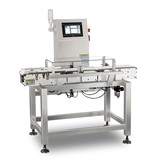
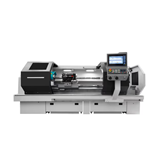

-160x160-state_article-rel-cat.png)

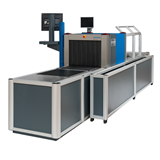

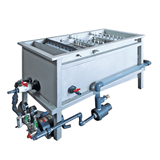
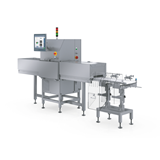
-160x160-state_article-rel-cat.png)
